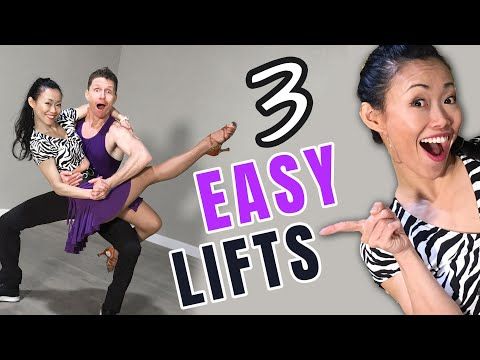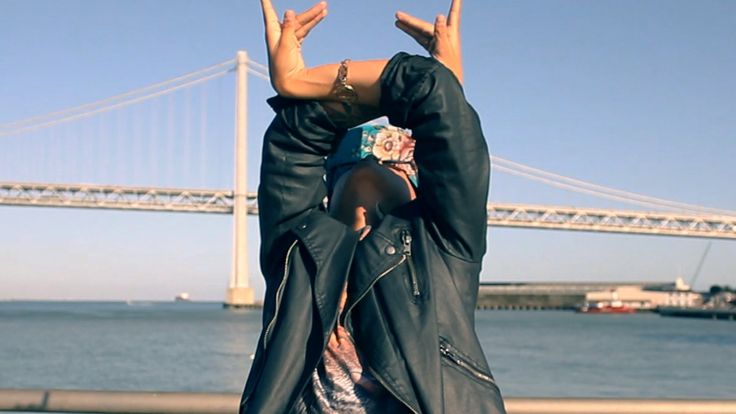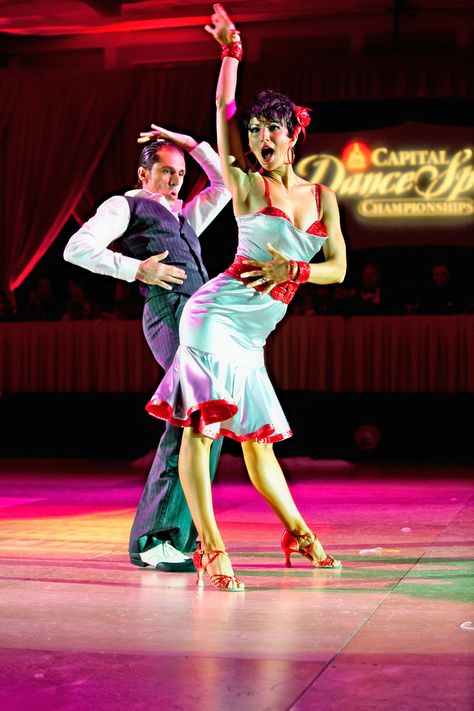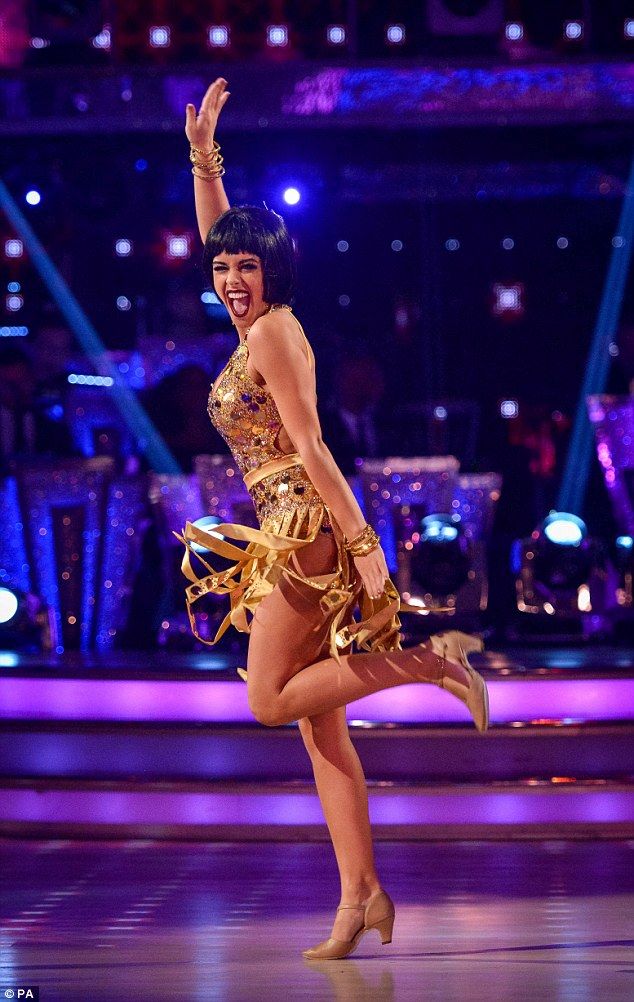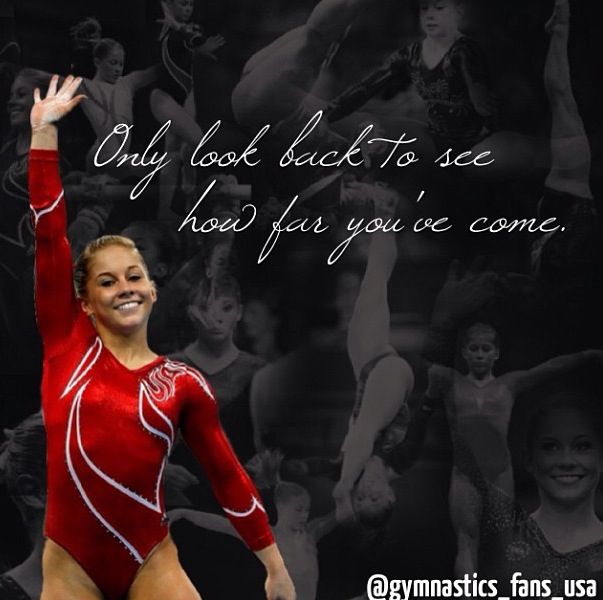How to do a dance lift
Dancer Blog: How Do Dancers Lift?
Skip to contentPrevious Next
- View Larger Image
Welcome back to the Dancer Blog! This week we’re going to be discussing partnering in dance. Specifically, how to partner. Growing up in dance I was pretty lucky. My studio actually had a number of male dancers, as many as 9 at one point, so partnering was a structured part of my training. It was around middle school, for me, when my studio started offering weekly partnering classes. During these classes we would learn different lifts and maneuvers common in ballet as well as other styles of dance. It was a great learning opportunity as it also taught me the communication skills needed to work with my dance partner in order to figure out what each of us needed to do to make the lifts work.
I remember this was also around this time that my gym class started offering classes in the weight room. Weight training twice a week meant that a lot of my classmates would ask each other “what do you lift?” At this age I was pretty snarky and regularly responded with “I lift people.” My friends knew that I was a dancer and most thought the response funny. Inevitably though, I’d get classmates who would say something like “that’s not lifting.” to which I would respond “No, it’s harder!”
Thinking back, I was actually pretty spot on with my thinking even if I didn’t really understand why yet. Yes, lifting people is more challenging than lifting weights. Weights just sit there and weigh whatever they weigh. People on the other hand adjust and change positions while you lift them. This changes the downward force that is applied to the lifter’s body as they lift. This means that while partnering, the person you’re lifting rarely “weighs” the same throughout the entire maneuver.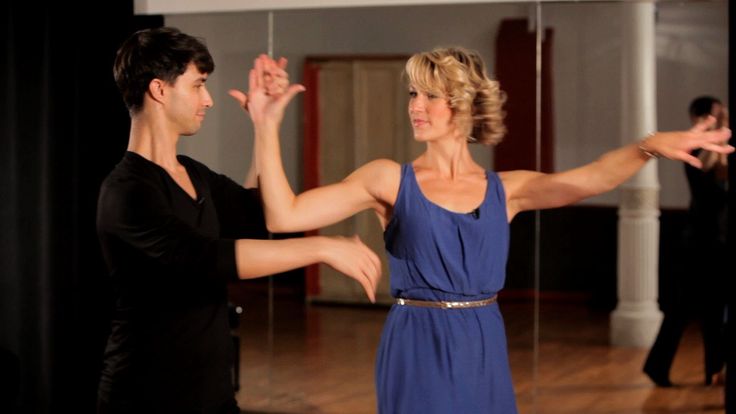 This creates a lot of additional challenges for the lifter. In fact, what this ultimately requires, is a completely different approach to how we lift.
This creates a lot of additional challenges for the lifter. In fact, what this ultimately requires, is a completely different approach to how we lift.
So what do I mean by this? Well if you’ve ever worked with a personal trainer or spent any time weight training then you’ll know that, when lifting weights, you never want to lock your joints into extended positions. I’m excluding powerlifting here. Rather you want to let the muscles do the work so that they can gain the benefit from the work out. This is because when we lift weights we are trying to build strength by stressing our muscles. This is very different from our goals in dance when we partner.
In dance, partnering is a function of choreographic expression. The goal isn’t to increase strength but rather, to create an aerial design or moving shape that tells a story. So why would this change our approach to lifting? If you approach partnering like you would a weight, two things are going to happen. One, rapidly fluctuating amounts of force are going to be sent into your muscles.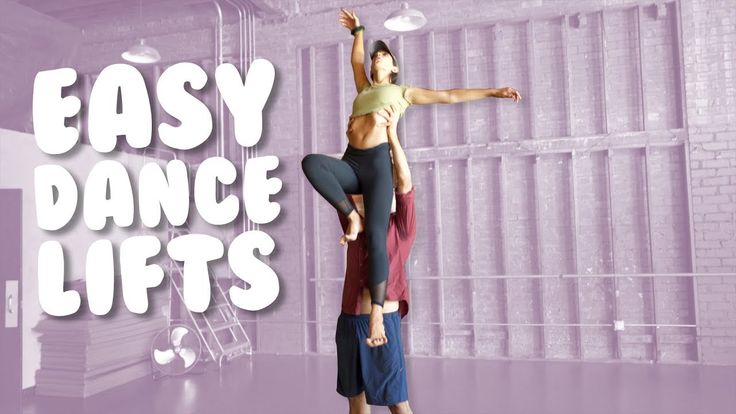 This is because, as I mentioned before, dancers are not inanimate objects. This makes it harder for the lifter to match the energy needed to steadily hold their partner in place.
This is because, as I mentioned before, dancers are not inanimate objects. This makes it harder for the lifter to match the energy needed to steadily hold their partner in place.
Imagine trying to hold an apple directly in front of you at chest level, only the apple is changing from 2 lbs to 10 lbs and back again randomly. Meanwhile you need to hold the apple steady at chest level. Trying to do this with brute strength alone would rapidly fatigue your muscles.
Secondly, depending on the lift you’re attempting, you may very well be trying to suspend a dancer in the air and hold them there for a prolonged period of time. I’m talking about présage lifts specifically but they’re not the only ones that call for this. In this instance you would be applying those same fluctuating forces through your muscles, only now it would be compounded over a prolonged period of time. Now imagine doing this over and over again throughout a three hour long production. This is not a healthy nor sustainable approach to partnering!
So how DO dancers lift? Well like with most things we’ve talked about on the Dancer Blog, when it comes to dance, invert it. That’s right, when partnering, the proper technique is to align your bones and lock your joints in order to create a semi rigid base that the lift can then rest on. This is not dissimilar to powerlifting.
That’s right, when partnering, the proper technique is to align your bones and lock your joints in order to create a semi rigid base that the lift can then rest on. This is not dissimilar to powerlifting.
But Dr. James isn’t that bad for your joints? Well, the answer is actually yes and… yeah technically BUT it can be mitigated. Hear me out, in my first two blog posts I discussed how a dancer’s biomechanics are different from a “normal” person’s biomechanics (Check out Part 1 and Part 2 here.) The reality is, some of the biomechanics that make dance aesthetically appealing, that is to say creates the beautiful lines and designs that we strive for, are not always healthy for the human body. This is the sacrifice that all athletes make when they pursue a career in their craft. But that’s not to say that there aren’t ways we can make it MORE healthy.
Let’s consider again the présage lift. This is a lift where we suspend our partner directly overhead and hold them in that position for some period of time.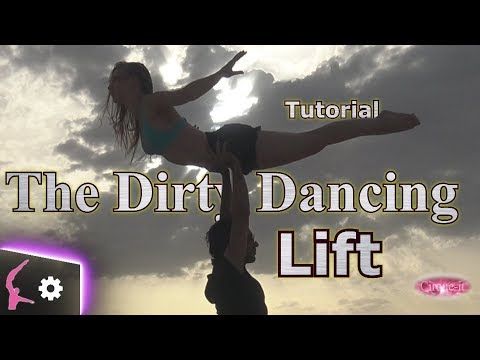 This can be done two handed or one handed. Unless you’re Superman, I promise you, you are not physically strong enough to lift a human being over your head with one arm and hold them there with just the strength of your muscles. In order to accomplish this lift, you have to work with your partner and utilize physics to your benefit. By timing your partners jump with your upward lift, you minimize the downward force your partner puts on your muscles. This allows enough time for the lifter to straighten and then lock their wrist, elbows, shoulders and back. Doing this takes the pressure off of the muscles and transfers them to the bones and joints.
This can be done two handed or one handed. Unless you’re Superman, I promise you, you are not physically strong enough to lift a human being over your head with one arm and hold them there with just the strength of your muscles. In order to accomplish this lift, you have to work with your partner and utilize physics to your benefit. By timing your partners jump with your upward lift, you minimize the downward force your partner puts on your muscles. This allows enough time for the lifter to straighten and then lock their wrist, elbows, shoulders and back. Doing this takes the pressure off of the muscles and transfers them to the bones and joints.
Bones are built to withstand forces, especially forces that travel down the length of the bone. Additionally, joints come with build in shock absorbers. For the spine that’s our intervertebral discs. Understand, there exists no lift in dance that does not utilize the spine as a key stone. This is intentional as the spine allows for a lot of stability and weight barring.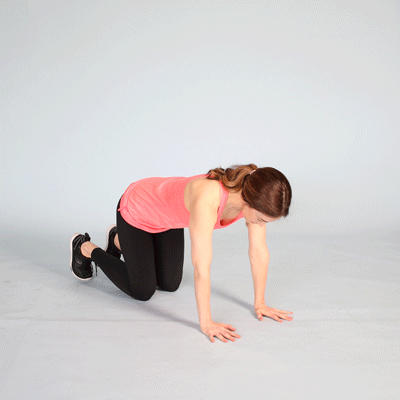
So what role do muscles play in partnering? The support role! I don’t want to mislead, muscles are critical for healthy partnering. They’re just not the stars. Muscles are vital in generating the initial explosion of energy needed to start a lift. Then, after the bones and joints create the frame, the muscles function to support that frame. That’s because as we discussed in my Flexibility and Strength blog, muscles create stability.
Look at the picture above. Even though this is not a présage lift, we can still see the frame and support systems at play. Our male dancer has aligned his supporting leg, pelvis and low back so as to create a sturdy base that the lift can rest on. We can also see how his shoulders are pressed down to support the carriage position of his arms. This is the frame that allows him to hold his partner over a period of time while sparing his muscles the brunt of the force. This allows the muscles to play the support role. By engaging his lumbar erectors, abdominals, glutes and hip flexors, our male dancer is able to increase the stability and strength of the frame. This, in turn, takes some of the weight barring off of the joints.
This, in turn, takes some of the weight barring off of the joints.
This is a perfect example of healthy partnering. We are accomplishing our goals from a choreographic stand point while also minimizing the risk of injury to the dancer’s body. Like strength and flexibility, it’s a balancing act. One without the other opens the dancer up to a number of injuries.
Speaking of this picture, this week’s shout out goes to (from left to right) Ken Scott, Kayleigh Danowski, David Morton and Jesssie Tidquist. Ken is on faculty with the Eastman School of Music and Kayleigh, David and Jesssie are company members with the New York State Ballet. This photo is from their production “Dancing with Duke Ellington. We’ve featured the company on the Dancer Blog before so make sure to go and check them out. They’re a great company with a lot of passionate dancers from around the country and the world. Plus, they’re located right here in Fairport.
We’ve covered a lot this week in regards to the biomechanics of partnering. Next week we’ll be continuing the topic by discussing common partnering injuries and how a dancer’s injury can tell you everything you need to know about they’re approach to partnering and where their weaknesses are.
Next week we’ll be continuing the topic by discussing common partnering injuries and how a dancer’s injury can tell you everything you need to know about they’re approach to partnering and where their weaknesses are.
Last thing, I’m really hoping to grow this dance community here at Pinnacle Hill Chiropractic into something special and that means interacting with my readers! So if you have any questions or topics you would like me to address here on the Dancer Blog comment below and let me know! Also if you want to help this community grow faster, please like and share this blog on Facebook, Instagram, and Twitter. Until next time!
Dr. James D. Walters was born in Hilton, New York. He has been a chiropractic patient ever since chiropractic care got him back on the stage following an injury he sustained while dancing. Dr. James is excited to be part of such an integrated practice and to provide care along side such passionate practitioners. He looks forward to bringing his passion for his patients’ health and wellness to his community and for the opportunity to treat performers with chiropractic care that is specifically built around their unique needs as patients.
He looks forward to bringing his passion for his patients’ health and wellness to his community and for the opportunity to treat performers with chiropractic care that is specifically built around their unique needs as patients.
Go to Top
An Easy Wedding Dance Lift Anyone Can Do — First Dance Charlotte
Alex Zsoldos
How To, Online Course
Alex Zsoldos
How To, Online Course
Usually when I propose adding a lift to a first dance, the first thing people think of is this:
Discover & share this Dirty Dancing GIF with everyone you know. GIPHY is how you search, share, discover, and create GIFs.
Luckily for my students, this is not what I mean. I pretty much would NEVER recommend attempting this lift at your wedding unless you are trained dancers, acrobats, professional athletes, etc.
And even then, do you really want the stress of a difficult lift to make you nervous throughout your entire first dance? Nah, I say save this lift for the hotel pool during your honeymoon. (If you need more convincing, check out this article about a couple who attempted the Dirty Dancing lift to disastrous results — ouch!)
The Lottery Lift
There are several very simple and easy-to-pull-off lifts that I propose to couples who are interested in adding a surprise element/ultimate crowd pleaser to their first dance. Probably the easiest one is what I call “The Lottery Lift.”
I call this “The Lottery Lift” because it’s probably what you would do if you won the lottery (which you kinda did by finding your other half and having them agree to marry you!) It’s not only beautiful but so easy to pull off that almost anyone can do it!
How to do this super easy wedding dance lift:
The person being picked up throws their arms around their partner’s neck and the one doing the picking up wraps their arms around their partner’s waist.

The person doing the lifting simply picks up their partner in a big bear hug and spins around in place.
Slow down at the end and gently place your partner’s feet back on the ground.
It’s super simple to pull off and a great way to end a first dance or highlight a particularly beautiful moment in your first dance song. It also looks amazing in wedding photos!
Learn a beautiful and romantic first dance online
If you are interested in learning this lift, along with other simple, yet beautiful, dance steps to incorporate into your wedding dance, check out my online course, Learn a Romantic and Instagram-Worthy First Dance for Beginners. These online wedding dance lessons take the guess work out of learning to dance for your wedding and teaches you tried and true steps that not only look beautiful but are super easy to learn.
Would you incorporate a lift in your first dance? DM me or leave a comment on my Instagram @firstdancecharlotte.
Photo of Annie and Luke by Genevieve Nisly Photography.
Tagged: wedding dance choreography, wedding dance lessons, online wedding dance lessons, first dance choreography online, dirty dancing lift, how to dance for my wedding, wedding dance lift, easy wedding dance steps, first section
"Kick" - an element of dance
Name:
Kick (English) - push, kick, kick.
The dance movement "Kick" is an accentuated sharp and quick throw of the leg from the knee (shin swing), with leg straightening. (The movement resembles kicking a ball.)
The "Kick" movement is not only a sharp throw of the lower leg from a bent knee, but also a sharp return movement of the leg towards you.
"Kick" can be done forward, sideways, back.
Music
Time signature 2/4.
Score: I-1-I-2
Preparatory exercise:
Leg raise/up with bent knee
Starting position
The dancers stand in lines.
Legs - in 1 pos.
Hands on the belt.
| Account | Movement description |
| 1 | Bending the right leg at the knee, lift the thigh of the right leg up almost parallel to the floor, (the knee of the right leg rises forward/up). The foot of the right leg with a drawn toe slides along the lower leg of the supporting left leg and is pressed against the knee of the left leg. |
| 2 | Lower the right leg, put it in the starting position. |
The same - with the left foot.
"Kick" with the right foot forward
Starting position
The dancers stand in lines.
Legs - in 1 pos.
Hands on the belt.
| Account | Movement description | |
| Start-up (I) | Bending the right leg at the knee, lift the thigh of the right leg up almost parallel to the floor, (the knee of the right leg rises forward/up). The foot of the right leg with a pulled toe slides up along the lower leg of the supporting left leg and is pressed against the knee of the left leg. The foot of the right leg with a pulled toe slides up along the lower leg of the supporting left leg and is pressed against the knee of the left leg. | |
| 1 | With a quick and sharp movement with a slight throw, extend the right leg (straighten the knee of the right leg) forward / down and slightly crossed in front of the supporting left leg, the toe of the right leg is pulled. The distance between the floor and the toe of the right foot is approximately 15 cm. | Again sharply bend the right leg at the knee, lifting the thigh up (knee of the right leg - forward/up). The foot of the right leg with the toe extended is pressed against the knee of the left leg. |
| 2 | Bring the right foot to the left foot in the starting position. |
"Kick" with the left foot forward, as well as "Kiki" to the side and back are performed similarly.
Video for the dance element "Kick"
The dance element "Kick" is demonstrated by KONDRATENKO G. M. - Head of the City Methodological Association (GMO) of ballroom dance teachers at the St. Petersburg City Palace of Youth Creativity. The recording was made at the Dance Seminars - Workshops of the UNESCO International Dance Council in St. Petersburg, 2014-2015 academic year. PAVLOV V.G. Club "Phoenix" DKiT them. I.I. Gaza (St. Petersburg), Fellow and Examiner of the International Union of Dance Teachers (IDTA).
M. - Head of the City Methodological Association (GMO) of ballroom dance teachers at the St. Petersburg City Palace of Youth Creativity. The recording was made at the Dance Seminars - Workshops of the UNESCO International Dance Council in St. Petersburg, 2014-2015 academic year. PAVLOV V.G. Club "Phoenix" DKiT them. I.I. Gaza (St. Petersburg), Fellow and Examiner of the International Union of Dance Teachers (IDTA).
The video was made at the Advanced Training Courses for Ballroom Dance Teachers held by MAUT.
Jump, step with jump
Jump (step with jump) is a step followed by a jump on the same foot.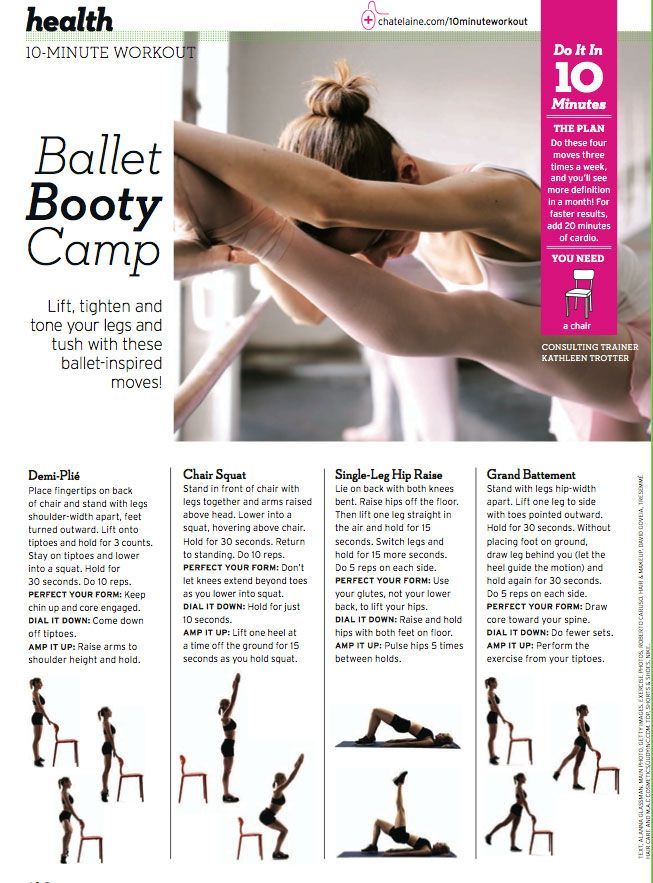
The jump is performed lightly, airy, with an emphasis on the jump.
Music
Time signature 2/4 (polka).
Score: I-1-I-2-I
Preparatory exercises
Home position.
The dancers stand in lines. Legs - in 1 pos. Hands are on the belt.
Preparatory exercise No. 1.
Leg raise/up with bent knee.
| Account | Movement description |
| 1 | Raise the right leg forward/up with the knee bent, the toe is extended, the foot of the right leg is pressed against the knee of the supporting left leg |
| 2 | Lower the right leg, put it in the starting position, straighten the knee |
The same with the left leg.
Preparatory exercise No. 2.
Step in place with a leg bent at the knee.
| Account | Movement description |
Before starting the movement, put the right foot next to the left foot on the toes (on the big toe).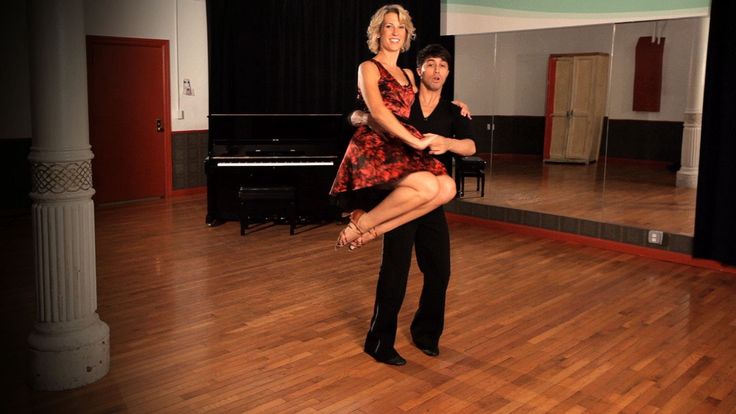 Weight is on the left leg. Weight is on the left leg. | |
| Start (I) | Slightly raise the right leg off the floor with the toe pulled out |
| 1 | Step with the right foot in place: lower the right foot to the floor from the toe to the entire foot next to the left foot, stand on the right foot (transfer weight to the right foot) |
| AND | Raise left leg forward/up with knee bent, toe pulled out, left foot pressed against right knee |
| 2nd | The movement is repeated from the left leg |
Preparatory exercise No. 3.
Step forward with leg bent at the knee.
| Account | Movement description |
| Before starting the movement, put the right foot next to the left foot on the toes (on the big toe). Weight is on the left leg. | |
| Start (I) | Slightly raise the right leg off the floor with the toe pulled out |
| 1 | Small step forward with the right foot from the toe to the whole foot, stand on the right foot (transfer weight to the right foot) |
| AND | Raise left leg forward/up with knee bent, toe pulled out, left foot pressed against right knee |
| 2-I | The movement is repeated from the left foot |
Jump (step with jump) in place
Starting position.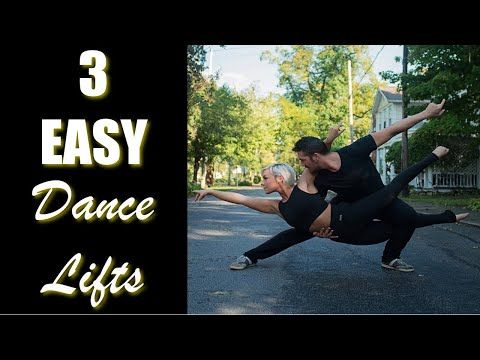
The dancers stand in a circle, facing along the line of dance. Legs - in 1 pos. Hands are on the belt.
| Account | Movement description |
| Before starting the movement, put the right foot next to the left foot on the toes (on the big toe). Weight is on the left leg. | |
| Start (I) | Slightly raise the right leg off the floor with the toe pulled out |
| 1 | Step with the right foot in place: lower the right foot to the floor from the toe to the entire foot next to the left foot, stand on the right foot (transfer the weight to the right foot). Slightly soften the knee of the right leg. |
| and | Jump on the right leg: jump on the right leg, at the same time the left leg, bent at the knee, rises sharply forward / upward, the foot of the left leg is pressed against the knee of the right leg, the toe of the left leg is strongly pulled back (the knee of the right leg is almost straightened at the time of the jump) |
| 2nd | The movement is repeated from the left foot |
Jump (step with jump) moving forward
Starting position.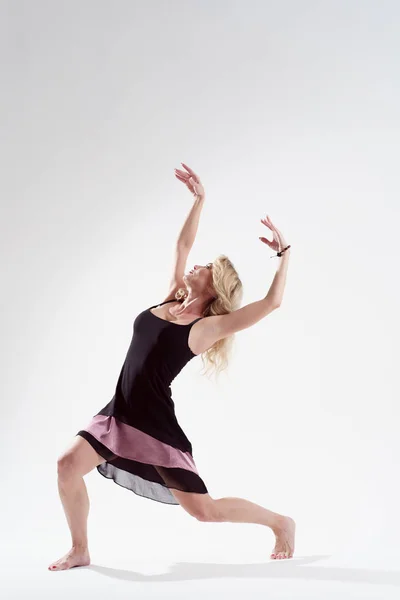
The dancers stand in a circle, facing along the line of dance. Legs - in 1 pos. Hands are on the belt.
| Account | Movement description |
| Before starting the movement, put the right foot next to the left foot on the toes (on the big toe). Weight is on the left leg. | |
| Start (I) | Slightly raise the right leg off the floor with the toe pulled out |
| 1 | A small step forward with the right foot from the toe to the entire foot, stand on the right foot (transfer the weight to the right foot). Slightly soften the knee of the right leg. |
| and | Jump on the right leg: jump on the right leg, at the same time the left leg, bent at the knee, rises sharply forward / upward, the foot of the left leg is pressed against the knee of the right leg, the toe of the left leg is strongly pulled back (the knee of the right leg is almost straightened at the time of the jump) |
| 2nd | The movement is repeated from the left foot |
Literature
- " Modern ballroom dance ".
